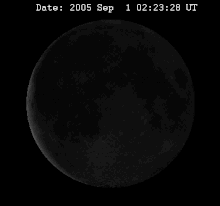User:Trafford09
Tip of the moment...
 Avoid trademarks
Try to avoid using trademarks whenever possible. When trademarks do need to be used, remember to follow standard English text formatting and Wikipedia Method of Style (MOS) capitalization rules even if the trademark owner encourages special treatment. Do not use special symbols such as TM and ® unless they are important to the context, such as to distinguish between generic and brand names for drugs. Product logos and corporate logos may be used once in the infobox or corner of articles about the related product, service, company, or entity. Be sure to use a low-resolution version of the logo to comply with copyright requirements for fair-use. – – Read more: To add this auto-randomizing template to your user page, use {{totd-random}}
|
- Tomorrow's FA (Featured Article)

In historical linguistics, Weise's law describes the loss of palatal quality some consonants undergo in specific contexts in the Proto-Indo-European language. In short, when the consonants represented by *ḱ *ǵ *ǵʰ, called palatovelar consonants, are followed by *r, they lose their palatal quality, leading to a loss in distinction between them and the plain velar consonants *k *g *gʰ. Some exceptions exist, such as when the *r is followed by *i or when the palatal form is restored by analogy with related words. Although this sound change is most prominent in the satem languages, it is believed that the change must have occurred prior to the centum–satem division, based on an earlier sound change which affected the distribution of Proto-Indo-European *u and *r. The law is named after the German linguist Oskar Weise (epitaph pictured), who first postulated it in 1881 as the solution to reconciling cognates in Ancient Greek and Sanskrit. (Full article...)
(Don't panic if the above item is in red.)
... ctd.
(not really, but I like the gif)
(another neat gif)
|
... so see US firearm deaths, {US} angry White man and
|
If some of the above tickle you, do check out these: User:Ira_Leviton#About_me_via_userboxes - bravo Ira :)

How is Wikipedia considered, externally?
[edit]* * * Did you know that you can support Wikipedia, by becoming a fan of its Facebook Group? * * *
| External aspects of Wikipedia. Hit 'show' to present a drop-down list ---> | |
|---|---|
|
"Wikipedia better than Britannica", claims experienced dictionary-writer. Good ol' Beeb. Several sections of the BBC have a policy of using Wikipedia unashamedly (good on them). BBC article March 2009: "UK politicians' Wikipedia worries" is largely pro-Wikipedia, despite its title. BBC article 2007: "Students 'should use Wikipedia'" it says, partially quoting Jimmy Wales. Some BBC articles rely heavily on directing readers to WP, e.g. this article on WW2 code-breaking. The Electoral Reform Society (ERS) (here) directs viewers to Wikipedia's Counting Single Transferable Votes article. The Daily Telegraph's on-line website section provides an RSS feed from Wikipedia (here), above its own Technology RSSs, but ironically still propagates old anti-Wikipedia stories (here) ! BBC article 2005: [1] The results of an analysis of a broad range of entries from the websites of Wikipedia and Encyclopædia Britannica] states that "... reviewers also found many factual errors, omissions or misleading statements: 162 and 123 in Wikipedia and Britannica, respectively.". But we've improved since then, I'm quite sure. Re. spam: http://rushprnews.com/2010/03/31/pr-consultants-should-think-twice-before-using-wikipedia-to-promote-clients How big is Wikipedia? This big! See also Wikipedia:Statistics. As of today, Thursday, November 21, 2024, English Wikipedia has 6,914,136 articles. Wikipedia has an "External peer review" page: Wikipedia:External_peer_review. Quotes from people that have made comments about Wikipedia as a whole can be found at Wikipedia:Testimonials and Wikipedia:Criticisms. See also Category:Critics of Wikipedia. See also Wikipedia:Press coverage 2010. |
Favourite articles etc.
[edit]
Just a reminder to myself of what I rate as Good articles etc.
| My favourite articles | ||
|---|---|---|
|
 This Wikipedian recites the Wiki Prayer regularly. | God, grant me the serenity to accept the pages I cannot edit, The courage to edit the pages I can, And the wisdom to know the difference. |
See also
[edit]| Assorted snippets, hints & tips |
|---|
|
Click here. |
Self-reminders
[edit]| Things done / to do | ||
|---|---|---|
|
See web-browsers & mIRC chat, for double-spacing etc. |
Read, get & use user:chzz/help. |
Read about using freenode Correct any misused templates, finding them by a search of WP Mainspace articles, like this. |
Ongoing
[edit]
When the Moon is closest, it is at perigee, and it looks slightly bigger from Earth. Perigee is the point at which an object makes its closest approach to the Earth. Often the term is used in a broader sense to define the point in an orbit where an orbiting body is closest to the body it orbits. The opposite is the apogee, the farthest or highest point.
Vandal-patrolling.
Help out with pages which need copy-edit.
Most-wanted articles - some 'missing" articles are still linked 140 times!
Help with Requests for feedback, as & when I get time.
Added {{Portal box|Law}} * In re & {{Clear}} to these "In re" articles.
Wikipedia Templates and User Page Metadata
[edit] | |
| Wikipedia ads | file info – show another – #6 |



